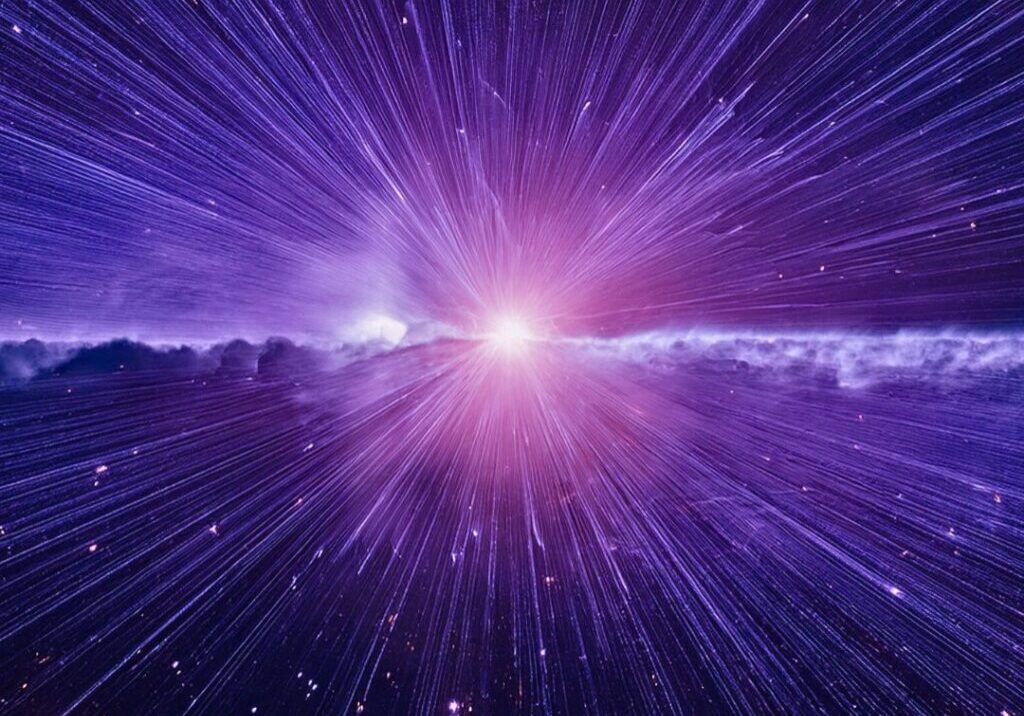Soul Brothers? St. Paul and Pierre Teilhard de Chardin: Apostle to the ‘Gentiles’ of Modernity
THE TENSIONS OF CHRISTIAN HUMANISM
It is the problem of Christian humanism, of how to balance the interests of God and those of human beings. When correctly interpreted, Teilhard would say, their interests are one and the same. Because for Christian faith, God is now and forever a human being, and the human being, Christ, is God. Poorly interpreted, however, people may turn away from ‘God’ to seek what seems humanly better. Teilhard wrote The Divine Milieu as an attempt to teach Christians how to see and love the world in the right way, to find and celebrate God in the daily material reality and sheer effort of their lives. In this way their whole living could be motivated and energised, as a joyful act of contributing to the evolution of the Kingdom of Love. In a word, “life to the full,” here, now, as well as over the horizon.
“Humanity was sleeping – it is still sleeping- imprisoned in the narrow joys of its little closed loves. A tremendous spiritual power is slumbering in the depths of our multitude, which will manifest itself only when we have learnt to break down the barriers of our egoisms and, by a fundamental recasting of our outlook, raise ourselves up to the habitual and practical vision of universal realities.
Jesus, Saviour of human activity to which you have given meaning, Saviour of human suffering to which you have given living value, be also the Saviour of human unity; compel us to discard our pettinesses, and to venture forth, resting upon you, into the uncharted ocean of charity.” [1]
BREADTH OF VISION
To return to comparing the two figures: one of Paul’s personal gifts was the sheer breadth and intellectual cast of his mind. Quite independently of the prologue to the fourth Gospel, written later by St. John the Evangelist, though clearly inspired by the same Holy Spirit, Paul exclaimed of Jesus,
He is the image of the invisible God, the firstborn of all creation, for in him all things were created, in heaven and on earth, visible and invisible. All things were created through him and for him. He is before all things and in him all things hold together …And through him to reconcile to himself all things, whether on earth or in heaven, making peace by the blood of his cross. [2]
With divinely inspired daring, Paul placed the totality of the world, of reality as then known, at the feet of Jesus the Christ, – a man whose lifetime was partly contemporary with his own! There is a providence, perhaps, in the fact that Paul had not known Jesus during his earthly life, but only through a profound mystical experience. This it was that gave him the perspective and the depth of faith to make such cosmic claims for Jesus the Christ.
It was precisely this passage, and others of similar depth both in Paul and St. John the Evangelist, that gave Teilhard both inspiration and scriptural support for the cosmic dimensions of his Christ. What he did was to work out step by step, throughout his whole life, nothing less than a theory of everything, holy grail of scientists. Except that Teilhard’s everything included both evolving consciousness – ‘the inside of things’ -and the Human God, incarnated in Jesus the Christ. And he went on to fearlessly interpret the entire cosmic story and the evolutionary story in that light. Christ, the Human God, is nothing less than the Alpha and Omega of the whole of reality, from the atoms of the big bang to the complexities of a whole human race of nearly eight billion individuals. For “In him all things hold together.” Christ must be clothed in the glorious cosmic robes of the whole, as we now know it.
FAITHFUL TO THE ESSENTIALS OF THE CHRISTIAN FAITH
From a spiritual viewpoint in The Divine Milieu, and a scientific view point in The Human Phenomenon, and in numerous other works (all forbidden by the Church to be published during his lifetime), Teilhard sets out his unified view of the evolution of the cosmos and of life on earth. He suggests how the major doctrines of the Church might be re-interpreted for people today in a whole new light, radiantly meaningful.
Dutch theologian and general editor of the official French text of the works of Teilhard de Chardin, N. M. Wildiers writes:
“His faithfulness to Church teachings is not to be doubted for a moment. His passionate love for Christ and the Church are beyond all question. The renewal he aimed at in theology never affected the kernel of Catholic teaching in matters of faith, but only its outer aspect, the way in which it was presented. He believed that the solution and renewal, so badly needed, were to be found, not in departing from traditional theology, but in exploring it more deeply”.[3]
Teilhard wanted Catholic dogmas, first developed within a static, older, smaller Greek cosmos, to be reset in a world now seen as dynamic. It becomes a question of transposing them.
“The transposition into cosmogenic dimensions of the traditional view expressed in cosmic terms: creation, spirit, evil, God (and, more specifically, original sin, the cross, the resurrection, the Parousia,[4] charity…) – all these notions, once they are transposed to a ‘genesis’ dimension, become amazingly clear and coherent.” He is convinced that “the most traditional Christianity can be interpreted so as to embrace all that is best in the aspirations of our times.” To make this evident is the job of the theologian who has understood the spiritual predicament of our time… The central problem…is undoubtedly that of the relation between God and the world… “In every branch of sacred science, the time has come to investigate, by study and by prayer, the area in which God and the cosmos come together.” [5]
ALWAYS POINTED TOWARDS THE FUTURE
Teilhard, the palaeontologist, never ceased to be fascinated by the future, and where evolution might lead us. “Studying the very ancient past has revealed to me how the future is built,” he wrote. With amazing prescience, he intuited that the evolution of consciousness would bring about a living pooling of minds, a noosphere (from the Greek nous for ‘mind’) around the planet, something which has happened in our times through the internet, that is bringing about a growing unification of humanity. This however is not without its dark side. “Whatever has yet to be completed is of necessity imperfect, defective, unfinished. Evil is thus structurally part of an evolving world. An evolving world and a perfect world would be mutually contradictory.”
According to Teilhard, there is no reason for evolution to stop. As conscious beings we are the universe grown conscious of itself. We are now responsible for where evolution is going and the arrow of time points only one way. The future beckons us on, but without the Human God to guide it and lead it, evolution will miss its mark. The ultimate destiny of the cosmos and the human story is to reach a central Omega point of convergence, as a united humanity, which through the power of love, will be divinised through union with God. “Love is the most powerful and still least known energy in the world,” he writes. “Love is the affinity which links and draws together the elements of the world… Love, in fact, is the agent of universal synthesis.”
The visions of science and theology blend in Teilhard’s totally unified vision, which is why he can come under fire separately from both camps, for different reasons. Others, however, welcome his unified vision of reality as a deliverance from the dualism that would pit matter against spirit, body against soul, earth against heaven. “There is neither spirit nor matter in the world; the stuff of the universe is spirit-matter.”
God’s work is one, and we are called to build up God’s Kingdom through building up the earth in the right way. It is dangerous to keep the spiritual and material separate or even opposed in our minds, because the materialist approach, as things stand, is seriously gaining hearts and minds, and the process is perhaps accelerating in developed countries. Meanwhile the Church in the West is withering in apparent old age. More and more people are becoming ‘spiritual but not religious.’ “The future belongs to those who give the next generation reason for hope,” writes Teilhard. Will the future belong to the Church? Only if its voice can be heard using the concepts and language of Modernity.
However, one happy fruit of Teilhard’s growing influence after his death is how his vision of the whole became the inspiration of the American, Thomas Berry, who went on to become the father of the ecological movement. Berry is quoted by cosmologist Brian Swimme as telling him, “To see as Teilhard saw is a challenge, but increasingly his vision is becoming available to us. I fully expect that in the next millennium Teilhard will be generally regarded as the fourth major thinker of the western Christian tradition. These would be St Paul, Augustine, Thomas Aquinas and Teilhard.”[6]
Teilhard’s vision, reflected in science, is making its way in the world today, increasing our sense of unity with and connection to the whole. We are now seeing that everything is related to everything else, an insight that leads to a new sense of responsibility.
URGENCY OF THE CHURCH’S MISSION
Giving a new voice to Church teachings expressed in the concepts of Modernity is an urgent task. Like St Paul, Teilhard had the all too rare ability, and the life experience, to see things from the ‘Gentile’ viewpoint. With his burning missionary heart, he makes an impassioned plea to the Church to look, not beyond the world, but at it, and exclaims,
“Jerusalem, lift up your head. Look at the immense crowds of those who build and those who seek. All over the world, men are toiling- in laboratories, in studios, in deserts, in factories, in the vast social crucible. The ferment that is taking place by their instrumentality in art and science and thought is happening for your sake. Open, then, your arms and your heart, like Christ your Lord, and welcome the waters, the flood and the sap of humanity. Accept it, this sap – for, without its baptism, you will wither, without desire, like a flower out of water; and tend it, since, without your sun, it will disperse itself wildly in sterile shoots.” [7]
“WHO ARE YOU TO TEACH US?”
Paul, of verifiable mystical experience and a conversion from persecutor to advocate, needed no qualification for his moral authority. What about Teilhard?
Though of quite a different order, some see a form of divine accreditation, a seal of approval, in the fact that Teilhard died of a sudden heart attack on an Easter Sunday, the 10th April 1955, as he had long wished to do. It was the feast dearest his heart, the day of the risen Christ, Omega centre and destiny of the evolving cosmos, to whom he had passionately dedicated his life’s work.
Unlike Paul, who freely preached and taught, Teilhard was a gagged prophet right to the end. Frustration was his cross, and his sufferings on that score were as great as his burning desire to teach and rescue the Church he loved, for the sake of the world. Yet he bore this unending trial patiently, humbly, without bitterness, heroically obedient. When some wondered why he would not leave his Jesuit order or the Church, he would smile and quote St. Exupéry, ‘In order to have an effect upon the house, you have got to live in it.’ [8] Fortunately, he had his full-time career as a palaeontologist working in the field, mostly in China, to occupy him.
The French philosopher, Étienne Gilson (1884-1978) writes:
There is nothing shady about the origins of Pièrre Teilhard de Chardin’s celebrity; everything in him was pure. Under the continual flow of scientific or other alluvions he kept intact and miraculously preserved the nugget of pure gold which was the piety and faith of his childhood. [9]
In the fervour of his prayer we see the intensity of his love for Christ, the mark of a saint.
“Disperse, O Jesus, the clouds with your lightning! Show yourself to us as the Mighty, the radiant, the Risen! Come to us once again as the Pantocrator [Ruler of Everything] who filled the solitude of the cupolas in the ancient basilicas! Nothing less than this Parousia is needed to counter-balance and dominate in our hearts the glory of the world that is coming into view. And so that we should triumph over the world with you, come to us clothed in the glory of the world.”[10]
To conclude, if Paul in the first century gained the title ‘missionary to the Gentiles’, Teilhard in the twentieth and beyond can be seen as a parallel figure, a soul brother, missionary to the sophisticated ‘Gentiles’ of Modernity, and teacher of teachers.
Each of them claimed nothing less than the whole of reality for the Human God.
About the Author
Hilda Geraghty is a retired secondary school teacher, living in Dublin, Ireland, with post-graduate qualifications in Spirituality, Catechetics, and Applied Youth Ministry. Visit her website www.teilharddechardinforall.com for more information.
Notes
[1] Teilhard de Chardin, The Divine Milieu, Harper Torchbooks, The Cathedral Library, Harper and Row, Publishers, New York, 1965, p.146.
[2] Col.1:14-20.
[3] N.M. Wildiers, An Introduction to Teilhard de Chardin, Collins Sons &Co. Ltd, London and Harper and Row, New York, 1968, p.138
[4] The return of Christ in glory at the end of time.
[5] N.M. Wildiers, An Introduction to Teilhard de Chardin, Collins Sons &Co. Ltd, London and Harper and Row, New York, 1968, pp 123-4.
[6] Quoted in the foreword to The Human Phenomenon, a new edition and translation, p xiv, Sussex Academic Press, Brighton, Chicago, Toronto, 2015.
[7] Teilhard de Chardin, The Divine Milieu. Harper Torchbooks p 154, Harper and Row, Publishers New York 1965.
[8] Robert Speaight, Teilhard de Chardin, a Biography, by, Collins, London, 1967, p. 323.
[9] Seminarium no. 4. ibid., p 326.
[10] Teilhard de Chardin, The Divine Milieu. Harper Torchbooks, Harper and Row, Publishers New York 1965, p.128
 View print-friendly version
View print-friendly version
2 Comments
Related Posts

The Earth Groans, AI Grows: Who Guides the Flame?
In this critical moment of planetary history, where ecosystems collapse, artificial intelligence proliferates, and human meaning trembles on the edge of uncertainty, we are faced with a profound question: What kind…


Beautiful article! Thank you for pairing these two mystics and elucidating their brilliance!
Thank you for your offering and perspective on Paul and Teilhard. In my view, Teilhard was by far not nearly the theologian Paul was, nor did Paul have the probative scientific mind, or gift of analysis and synthesis along integral lines that was the hallmark of Teilhard’s calling. Paul was a theologian-mystic, Teilhard a scientist-mystic. Though living in radically different times, and in possession of radically different gifts, seems what made them brothers was their common mystical (non-dual) intersection — that place in consciousness that knows no time, religion, or historical epoch where the entire created order is one (when consciously realized and practiced). Halves of an integral whole, each man manifested and served from the incarnated “mind of Christ” in distinctive spiritual fashion (Rm. 12:2). Also, both men held unorthodox and therefore unpopular and risky views in their times. Like Merton, Teilhard may have indeed been “heroically obedient,” but it was foremost to his religious order and the defunct institutional church that spawned it, not to God. Therefore, unlike Paul, he never fully differentiated himself from his vestigial religious roots, was never fully kenotic in his call, “never spilled blood” sacrificially in the extreme, “suffering unto death” (religiously) in the footsteps of his Master (Heb. 12:4). Paul divorced himself cleanly from his institutional religious roots and its traditions to carry out his revolutionary charge, and so gets the nod for courage. Such does not diminish one whit the exemplary faith of Teilhard, nor his contributions to our times re: synthesis. On the contrary, we must learn from him in these perilous times living on “the edge of chaos,” and an emerging new order like no other in history. And we must improve upon what both courageously handed us in carrying out their exemplary work. For those on the vanguard, it is no time for faintheartedness, but to speak the truth boldly, wisely, and in love, no matter the cost. At times, such may mean biting (vigorously opposing) the hand that feeds you, especially if it keeps you from feeding yourself, and/or lifting others to their “not bread alone” identity and spiritual consciousness in non-dual literacy enroute to Omega. In that sense, “staying in a house to change it” makes little sense when its crumbling infrastructure has long since been condemned, ready to fall by its own weight to make room for its next highest form in evolution.